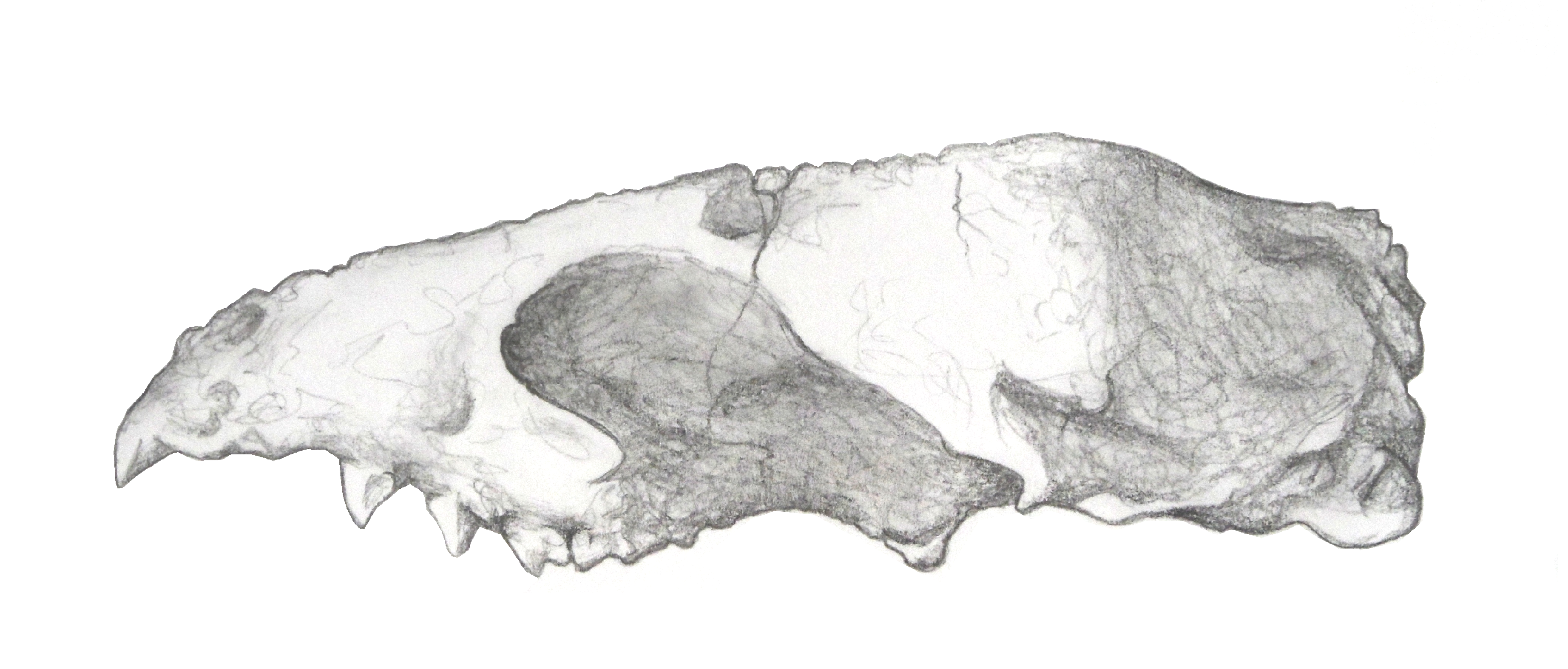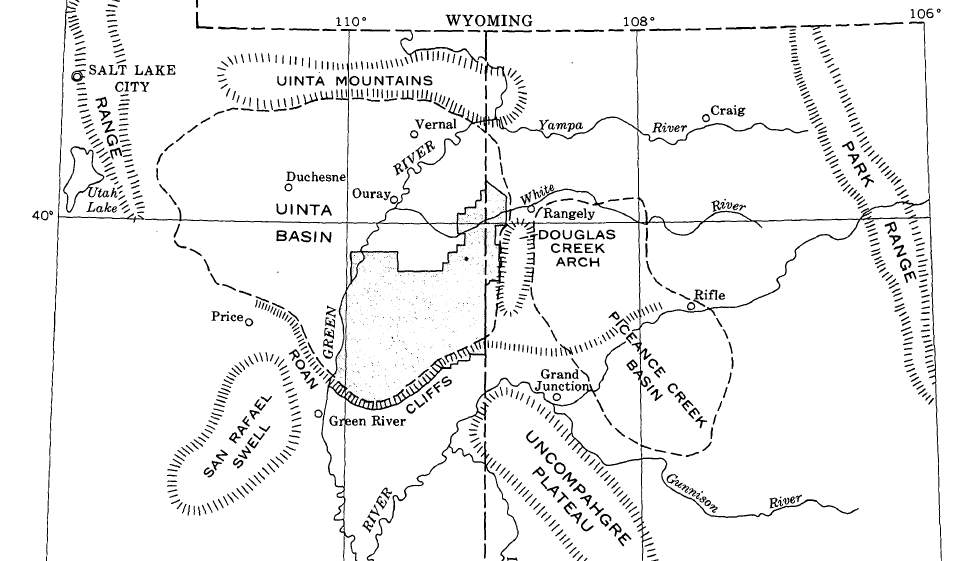|
Miacis
''Miacis'' is a genus of extinct carnivorous mammals that appeared in the late Paleocene and continued through the Eocene. The genus ''Miacis'' is not monophyletic but a diverse collection of species that belong to the stemgroup within the Carnivoramorpha.Wesley-Hunt, G.D.; Flynn J.J. (2005). Phylogeny of the Carnivora: Basal Relationships Among the Carnivoramorphans, and Assessment of the Position of 'Miacoidea' Relative to Carnivora. ''Journal of Systematic Palaeontology'', 3: 1-28. As such, most ''Miacis'' species belong to the group of early carnivores that represent the ancestors of the modern order, the crown-group Carnivora. However, the species ''Miacis cognitus'' (now ''Gustafsonia'') is placed not in the stem-group but among the Caniformia,Spaulding, M.; Flynn J.J.; Stucky, R.K. (2010) Anew basal Carnivoramorphan (Mammalia) from the ‘Bridger B’ (Black’s Fork Member, Bridger Formation, Bridgerian NALMA, Middel Eocene) of Wyoming, USA. ''Paleontology'' 53: 815-83 ... [...More Info...] [...Related Items...] OR: [Wikipedia] [Google] [Baidu] |
Carnivoramorpha
Carnivoramorpha ("carnivoran-like forms") is a clade of placental mammals that includes the modern order Carnivora and its extinct stem-relatives.Bryant, H.N., and M. Wolson (2004“Phylogenetic Nomenclature of Carnivoran Mammals.”''First International Phylogenetic Nomenclature Meeting''. Paris, Museum National d’Histoire Naturelle Classification and phylogeny Traditional classification * Clade: Carnivoramorpha basal clades to Carnivora, but without Creodont">Basal_(phylogenetics).html" ;"title="arnivora + all Basal (phylogenetics)">basal clades to Carnivora, but without Creodonts] ** Order: Carnivora (carnivorans) *** Suborder: Caniformia ("dog-like" carnivorans) *** Suborder: Feliformia ("cat-like" carnivorans) *** ''Incertae sedis'': **** Genus: †'' Palaeogale'' ** Superfamily: †Miacoidea *** Family: †Miacidae *** Family: †Viverravidae *** ''Incertae sedis'': **** †'' "Sinopa" insectivorus'' ** ''Incertae sedis'': *** Genus: †'' Ravenictis'' *** † C ... [...More Info...] [...Related Items...] OR: [Wikipedia] [Google] [Baidu] |
Miacis Cognitus
''Gustafsonia'' is an extinct genus of carnivoran belonging to the family Amphicyonidae (a bear dog). The type species, ''Gustafsonia cognita'', was described in 1986 by Eric Paul Gustafson, who originally interpreted it as a miacid and named it ''Miacis cognitus''. It was subsequently considered to be the only species of the diverse genus ''Miacis'' that belonged to the crown-group Carnivora, within the Caniformia, and it was ultimately assigned to the family Amphicyonidae. The type specimen or holotype was discovered in Reeve's bonebed, western Texas, in the Chambers Tuff Formation in 1986. The University of Texas holds this specimen. It is the only confirmed fossil of this species. Morphology Fossil The holotype is missing the mandible, upper canines, and zygomatic arch. The remainder of the skull is damaged, but relatively intact. Teeth It preserves the old style of many teeth, probably having forty-two, as compared to most modern carnivorans in the low thirties. With t ... [...More Info...] [...Related Items...] OR: [Wikipedia] [Google] [Baidu] |
Carnivora
Carnivora is a Clade, monophyletic order of Placentalia, placental mammals consisting of the most recent common ancestor of all felidae, cat-like and canidae, dog-like animals, and all descendants of that ancestor. Members of this group are formally referred to as carnivorans, and have evolved to specialize in eating flesh. The order is the fifth largest order of mammals, comprising at least 279 species. Carnivorans live on every major landmass and in a variety of habitats, ranging from the cold polar regions to the hyper-arid region of the Sahara Desert to the open seas. They come in a very large array of different body plans in contrasting shapes and sizes. Carnivora can be divided into two subclades: the cat-like Feliformia and the dog-like Caniformia, which are differentiated based on the structure of their ear bones and cranial features. The feliforms include families such as the felidae, cats, the hyenas, the mongooses and the viverridae, civets. The majority of felifor ... [...More Info...] [...Related Items...] OR: [Wikipedia] [Google] [Baidu] |
Caniformia
Caniformia is a suborder within the order Carnivora consisting of "dog-like" carnivorans. They include dogs (wolves, foxes, etc.), bears, raccoons, and mustelids. The Pinnipedia (seals, walruses and sea lions) are also assigned to this group. The center of diversification for the Caniformia is North America and northern Eurasia. Caniformia stands in contrast to the other suborder of Carnivora, the Feliformia ("cat-like" carnivorans), the center of diversification of which was in Africa and southern Asia. Description Most members of this group have nonretractile claws (the fisher, marten, sea otter ( forepaws only), red panda, and ringtail, and some foxes have retractile or semi-retractile claws) and tend to be plantigrade (with the exception of the Canidae). Other traits that separate the Caniformia from the Feliformia is that caniforms have longer jaws and more teeth, with less specialized carnassial teeth. They also tend more towards omnivory and opportunistic feeding, ... [...More Info...] [...Related Items...] OR: [Wikipedia] [Google] [Baidu] |
Bridger Formation
The Bridger Formation is a geologic formation in southwestern Wyoming. It preserves fossils dating back to the Ypresian Epoch of the Paleogene Period. The formation was named by American geologist Ferdinand Vandeveer Hayden for Fort Bridger, which had itself been named for mountain man Jim Bridger. The Bridger Wilderness covers much of the Bridger Formation's area. History Before colonization, the lands making up the Bridger Formation had been inhabited by the Apsáalooke, Bannock, Eastern Shoshone, Hinono'eino, Očhéthi Šakówiŋ, Só'taeo'o, Tsétsêhéstâhese, and Ute nations. European settlers began to settle the area around the Bridger Formation in the 19th century, beginning with the establishment of the Oregon Trail in 1830. Fort Bridger – for which the formation would later be named – was established in 1843 by Jim Bridger and Louis Vasquez. In 1868, the remaining Indigenous communities in the area were displaced by the Treaty of Fort Bridger, removing t ... [...More Info...] [...Related Items...] OR: [Wikipedia] [Google] [Baidu] |
Viverravus
''Viverravus'' ("ancestor of ''Viverra''") is an extinct genus of placental mammals from extinct subfamily Viverravinae within extinct family Viverravidae, that lived in North America, Europe and Asia from the middle Paleocene to middle Eocene. Classification and phylogeny Taxonomy Phylogeny The phylogenetic relationships of genus ''Viverravus'' are shown in the following cladogram:P. D. Gingerich and D. A. Winkler (1985."Systematics of Paleocene Viverravidae (Mammalia, Carnivora) in the Bighorn Basin and Clark's Fork Basin, Wyoming."Contributions from the Museum of Paleontology, University of Michigan 27(4):87-128P. D. Polly (1997."Ancestry and Species Definition in Paleontology: A Stratocladistic Analysis of Paleocene-Eocene Viverravidae (Mammalia, Carnivora) from Wyoming."Contributions from the Museum of Paleontology, University of Michigan 30(1):1-53S. Faurby, L. Werdelin, A. Antonelli (2019."Dispersal ability predicts evolutionary success among mammalian carnivores"Departm ... [...More Info...] [...Related Items...] OR: [Wikipedia] [Google] [Baidu] |
Othniel Charles Marsh
Othniel Charles Marsh (October 29, 1831 – March 18, 1899) was an American professor of Paleontology in Yale College and President of the National Academy of Sciences. He was one of the preeminent scientists in the field of paleontology. Among his legacies are the discovery or description of dozens of new species and theories on the origins of birds. Born into a modest family, Marsh was able to afford higher education thanks to the generosity of his wealthy uncle George Peabody. After graduating from Yale College in 1860 he travelled the world, studying anatomy, mineralogy and geology. He obtained a teaching position at Yale upon his return. From the 1870s to 1890s, he competed with rival paleontologist Edward Drinker Cope in a period of frenzied Western American expeditions known as the Bone Wars. Marsh's greatest legacy is the collection of Mesozoic reptiles, Cretaceous birds, and Mesozoic and Tertiary mammals that now constitute the backbone of the collections of Yale's Peabo ... [...More Info...] [...Related Items...] OR: [Wikipedia] [Google] [Baidu] |
William Berryman Scott
William Berryman Scott (February 12, 1858 – March 29, 1947) was an American vertebrate paleontologist, authority on mammals, and principal author of the White River Oligocene monographs. He was a professor of geology and paleontology at Princeton University. Family and education Scott was born in Cincinnati, Ohio, on February 12, 1858, the son of Mary Elizabeth Hodge Scott and William McKendree Scott, a Presbyterian minister. He was the youngest of three sons; his brother Hugh Lenox Scott went on to become superintendent of West Point and Army Chief of Staff. Shortly after the family moved to Princeton, New Jersey in 1861, his father died and the family lived with his maternal grandfather who was also a Presbyterian minister and an instructor at the Princeton Theological Seminary.American National Biography 1999Sterling 1997 His early education focused on theology, philosophy and the classics in preparation for an expected career as a minister. However, when he entered P ... [...More Info...] [...Related Items...] OR: [Wikipedia] [Google] [Baidu] |
Edward Drinker Cope
Edward Drinker Cope (July 28, 1840 – April 12, 1897) was an American zoologist, paleontologist, comparative anatomist, herpetologist, and ichthyologist. Born to a wealthy Quaker family, Cope distinguished himself as a child prodigy interested in science; he published his first scientific paper at the age of 19. Though his father tried to raise Cope as a gentleman farmer, he eventually acquiesced to his son's scientific aspirations. Cope married his cousin and had one child; the family moved from Philadelphia to Haddonfield, New Jersey, although Cope would maintain a residence and museum in Philadelphia in his later years. Cope had little formal scientific training, and he eschewed a teaching position for field work. He made regular trips to the American West, prospecting in the 1870s and 1880s, often as a member of United States Geological Survey teams. A personal feud between Cope and paleontologist Othniel Charles Marsh led to a period of intense fossil-finding competition ... [...More Info...] [...Related Items...] OR: [Wikipedia] [Google] [Baidu] |
Synapomorphy
In phylogenetics, an apomorphy (or derived trait) is a novel character or character state that has evolved from its ancestral form (or plesiomorphy). A synapomorphy is an apomorphy shared by two or more taxa and is therefore hypothesized to have evolved in their most recent common ancestor. ) In cladistics, synapomorphy implies homology. Examples of apomorphy are the presence of erect gait, fur, the evolution of three middle ear bones, and mammary glands in mammals but not in other vertebrate animals such as amphibians or reptiles, which have retained their ancestral traits of a sprawling gait and lack of fur. Thus, these derived traits are also synapomorphies of mammals in general as they are not shared by other vertebrate animals. Etymology The word —coined by German entomologist Willi Hennig—is derived from the Ancient Greek words (''sún''), meaning "with, together"; (''apó''), meaning "away from"; and (''morphḗ''), meaning "shape, form". Clade analysis T ... [...More Info...] [...Related Items...] OR: [Wikipedia] [Google] [Baidu] |
Uinta Basin
The Uinta Basin (also known as the Uintah Basin) is a physiographic section of the larger Colorado Plateaus province, which in turn is part of the larger Intermontane Plateaus physiographic division. It is also a geologic structural basin in eastern Utah, east of the Wasatch Mountains and south of the Uinta Mountains. The Uinta Basin is fed by creeks and rivers flowing south from the Uinta Mountains. Many of the principal rivers (Strawberry River, Currant Creek, Rock Creek, Lake Fork River, and Uintah River) flow into the Duchesne River which feeds the Green River—a tributary of the Colorado River. The Uinta Mountains forms the northern border of the Uinta Basin. They contain the highest point in Utah, Kings Peak, with a summit 13,528 feet (4123 metres) above sea level. The climate of the Uinta Basin is semi-arid, with occasionally severe winter cold. History Father Escalante's expedition visited the Uinta Basin in September 1776. 1822–1840 French Canadian tr ... [...More Info...] [...Related Items...] OR: [Wikipedia] [Google] [Baidu] |
.jpg)
.png)

.jpg)


.jpg)


